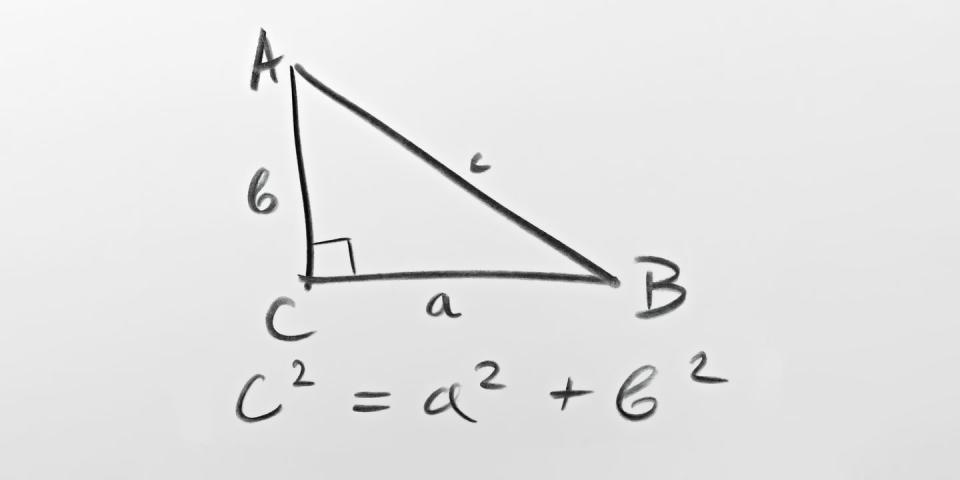Teens Have Proven the Pythagorean Theorem With Trigonometry. That Should Be Impossible.

The Pythagorean Theorem (a2 + b2 = c2) is fundamental to mathematics, especially to the field of trigonometry.
Some mathematicians have stated that proving the theorem using trigonometry is impossible without circular reasoning, because trigonometry relies so much on the theorem itself.
Two New Orleans high school students say they've proven the theorem using trigonometry without relying on circular reasoning.
The Pythagorean Theorem—discovered by the Greek mathematician Pythagoras in the 6th century BCE—is a cornerstone of mathematics. Simply stated as a2 + b2 = c2, the theorem posits that the sum of the two shortest sides of a right triangle (a2 and b2) is equal to that triangle’s longest side (c2). For centuries, this idea has been proven by some of history’s greatest minds, such as Albert Einstein, U.S. President James Garfield (of all people), and even Pythagoras himself.
In fact, there have been hundreds of proofs of the Pythagoras’ groundbreaking theorem, but almost none of them—if not none at all—have independently proved it using trigonometry. That’s because the fundamentals of the theorem are what the entire field of trigonometry is built on, and so, the thinking goes that to use trigonometry to prove the theorem is to employ what’s called “circular reasoning.” It’s essentially using the Pythagorean Theorem to prove the Pythagorean Theorem.
Some mathematicians argue that using trigonometry to independently prove the theorem is actually impossible, including Elisha Loomis, whose book on the topic (originally published almost a century ago) states that “there are no trigonometric proofs because all the fundamental formulae of trigonometry are themselves based upon the truth of the Pythagorean theorem.”
Well, two New Orleans high schoolers say they’ve proven the impossible.
According to a local news station WWL, Calcea Johnson and Ne’Kiya Jackson—two high schoolers from St. Mary’s Academy—presented a new proof to the American Mathematical Society’s Annual Southeastern Conference detailing how the Law of Sines can be used to prove Pythagoras’ 2,600-year-old mathematical wisdom. By using the Law of Sines, and avoiding the Pythagorean theorem’s trig identity (sin²α + cos²α = 1), Johnson and Jackson successfully proved the theorem without resorting to circular reasoning.
“It’s really an unparalleled feeling, honestly, because there’s just nothing like being able to do something that people don’t think young people can do,” Johnson told WWL in an interview. “A lot of times you see this stuff, you don’t see kids like us doing it.”
The American Mathematical Society said in a Facebook post that the two young mathematicians are being encouraged to submit their work to a peer-reviewed journal.
Although the full details of the proof haven’t been published, YouTuber MathTrain believes he worked out an approximation of Johnson’s and Jackson’s Law of Sines proof by analyzing stills from a local news report.
Although the proof is an impressive bit of mathematics, other mathematicians have employed similar approaches before, using sine and cosine to independently prove the Pythagorean Theorem without relying on sin²α + cos²α = 1. But regardless of these previous attempts, Johnson and Jackson’s achievement is no less impressive. Much like how Albert Einstein proved the theorem at the age of 12, an amazing mathematical proof has once again come from the ingenuity of young minds.
You Might Also Like
